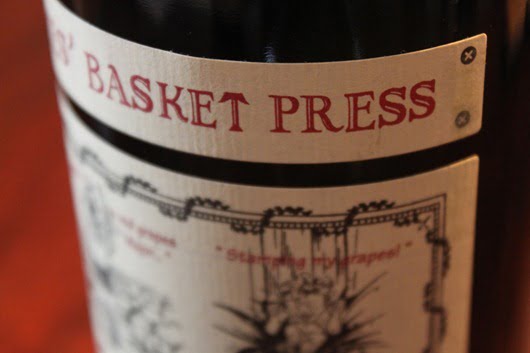Little James’ Basket Press – A Wine by Louis Barroul.
November 11, 2011
Grapes
100% Grenache
Facts
-
Louis Barruol, the winemaker behind the Little James Basket Press is part of the new generation of winemakers in the Southern Rhone region of France, who through years of study and instruction from his winemaking father, has breathed a fair amount of new life into their old family-held estates.
-
The Barruol family has a long heritage in winemaking and has been involved with the hugely respected Chateau de St. Cosme vineyard since 1490.

-
The Little James’ Basket Press is a 100% basket-pressed wine. The basket press was the first type of mechanized wine press to be developed, and it’s basic design has not changed over the last 1000 years.
A basket press is, you guessed it, a large basket that is filled with grapes. Pressure is applied through a plate that is forced down onto the fruit, usually in the form of a screw, but more often it’s some type of hydraulic device. The juice then flows through openings in the basket. It’s a very "old school" technique (see photo), but "new school" wineries such as Nickel & Nickel / Far Niente and Quintessa are using a more updated version.
-
Because the Little James’ Basket Press is essentially a blend of vintages, the wine doesn’t bear a vintage date (as such). Instead it states “Bottled in the year 2010”, rather than listing the year the grapes were harvested. The 2010 is composed of wines dating back to 1999.
-
A “Solera System” (check out my previous article on the Solera) is used for the blending of the wine, which is just a series of barrels that are linked, usually stacked in a pyramid form. Wine is removed from the bottom barrels, and new wine is replaced in the top, with the finished wine being a blend of years. Sherry, Marsala and aged Balsamic Vinegars are all made using a similar system.

 Place (click map for larger view)
Place (click map for larger view)
-
The Languedoc region in Southern France, is easily the largest region in terms of vineyards, and the region in which a majority of France’s cheap bulk wines are being made. Much of the wine produced in the Languedoc is labeled as Vin de Pays d’Oc (essentially Table Wine) however; because they are not bound to as many rules as the rest of France i.e. Burgundy, Bordeaux, Loire etc. they can be much more innovative.
-
The main grapes of the Languedoc include "big-name" international varieties such as Cabernet, Merlot, Sauvignon Blanc and Chardonnay, but also takes heavy influence from the nearby Rhone region, with grapes such as Grenache, Syrah, Mourvedre and Viognier.
-
Winemaking in the Languedoc dates back to the fifth century BC, making these vineyards some of the oldest in the world.
-
For more information visit: St Cosme.com

Taste
The wine drinks more seriously than you would think…
Strawberry, black-cracked pepper, black fruit, and herbs on the nose. Black fruit and pepper continue on the palate, with spice, vanilla, and oak on the finish. Fuller in body than I would have expected. Drier in style, but plenty of fruit. Holds the alcohol well and doesn’t over-power.
If you haven’t tried much in the way of French wine give this one a try; it’s a good comprise between New World and Old World winemaking, and is a chance to experience something from a world-class winemaker at a very reasonable price.
Food
Beef Bourguignon, pasta with herbed tomato sauce, french onion soup, aged cheddar, sausage, steak and kidney pie (I had to throw that one in there), smoked meats, and game.
Price
$12 retail











